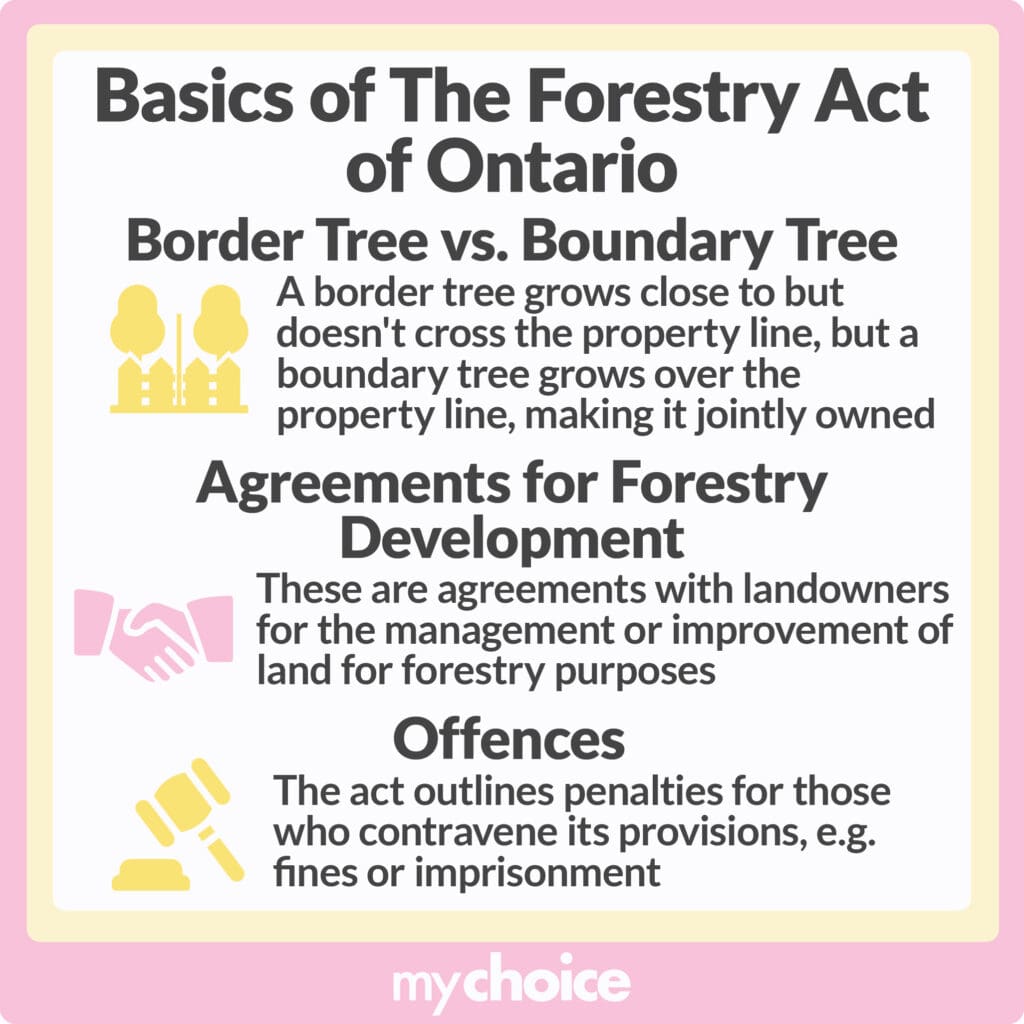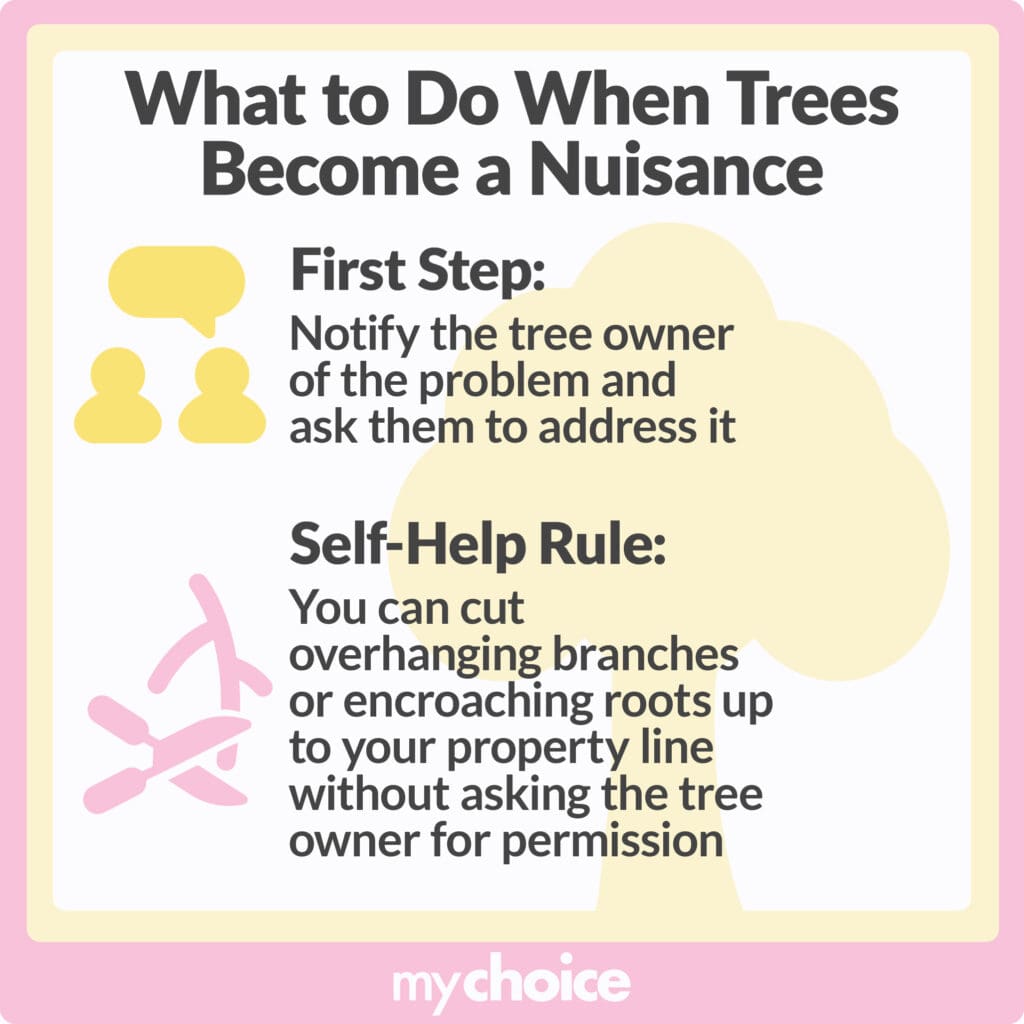Homeownership in Ontario comes with a unique set of challenges and rewards. Among the manicured lawns and peaceful ambiance, there might be the looming issue of a neighbour’s tree encroaching on your property. Trees undoubtedly enhance our environment, but they can sometimes lead to disputes between neighbours. Read on to learn if your homeowner insurance covers damages from fallen trees and how to approach issues related to your neighbour’s tree.
Understanding the Basics of The Forestry Act of Ontario
The Forestry Act of Ontario provides a comprehensive framework for the management, conservation, and sustainable development of forests within the province. Some key points from the act include:
- Border Tree vs. Boundary Tree: A border tree grows close to but doesn’t cross the property line, meaning it’s owned by the person on whose land it grows. A boundary tree, on the other hand, grows over the property line, making it jointly owned.
- Agreements for Forestry Development: The Minister of Natural Resources can enter into agreements with landowners for the management or improvement of land for forestry purposes. This includes the reforestation of specific portions of the land and the conservation of all growing trees on those portions.
- Offences: The act outlines penalties for those who contravene its provisions. For instance, individuals who destroy trees on another’s property without permission or obstruct an officer in the performance of their duties can face fines or imprisonment.
For a more detailed understanding of the Forestry Act and its implications, readers can refer to the official Forestry Act on the Ontario government website.

Are Fallen Trees Covered by Home Insurance?
Generally, if a neighbour’s tree falls due to natural events like storms and damages your property, your home insurance will likely cover the damages. However, if the tree was dead or rotting and the neighbour ignored it, they might be held liable. It’s also worth noting other specific scenarios, like whether home insurance covers mold infestations.
Neighbour’s Trees Overhanging My Property
If a tree branch from your neighbour’s side hangs over your property, local bylaws might allow you to cut that branch. However, be cautious! If you cause harm to the tree or kill it, you might face legal consequences or fines, especially if tree preservation bylaws are in place.
Fallen Tree Home Insurance: The Nitty-Gritty
If a tree falls and causes no damage, you bear the cleanup costs. But if there’s damage, your insurance might cover it. However, if you had previously warned your neighbour about a potentially hazardous tree and they did nothing, it could complicate matters.
When Trees Become a Nuisance
A tree becomes a nuisance when its roots or branches cross over the boundary and cause issues ranging from minor inconveniences to actual damage. If you’re on the receiving end of such a nuisance:
- First Step: Notify the tree owner of the problem and ask them to address it.
- Self-Help Rule: In most parts of Canada, you can cut overhanging branches or encroaching roots up to your property line without asking the tree owner for permission1.

The Importance of Communication
Building a good relationship with your neighbours can’t be stressed enough. Open communication can prevent misunderstandings and potential legal battles. As Fraser from Ajax advised, “Make sure that your insurance is up-to-date, know how to get a hold of your insurance provider and … definitely have a good relationship with your neighbours”.
Storm Damage to Trees in Toronto
In the bustling city of Toronto, trees play a vital role in enhancing the urban landscape, providing shade, and improving air quality. However, these urban trees are not immune to the forces of nature. Storms, particularly those with high winds, heavy rainfall, or snow, can cause significant damage to trees. This damage can range from broken branches to uprooted trees, posing potential hazards to residents, properties, and infrastructure.
The City of Toronto recognizes the importance of addressing storm damage promptly and efficiently. Residents are advised to:
- Report Damaged Trees: If you notice a city-owned tree that has been damaged due to a storm, it’s essential to report it to the appropriate city department for assessment and necessary action.
- Safety First: Always prioritize safety. If a tree or branch poses an immediate danger, such as obstructing a roadway or damaging power lines, contact emergency services.
- Private Property: Trees on private property are the responsibility of the property owner. However, if a tree from private property poses a risk to the public, the city may intervene.
For more detailed information and guidelines on how to handle storm-damaged trees in Toronto, residents can refer to the official City of Toronto’s page on Storm Damage to Trees.
Conclusion
Trees are a beautiful addition to our environment, but they can also be a source of disputes. Knowing your rights and responsibilities, coupled with open communication, can help in peacefully resolving tree-related issues. And remember, when in doubt, consult with professionals or legal experts to guide you through the process.








